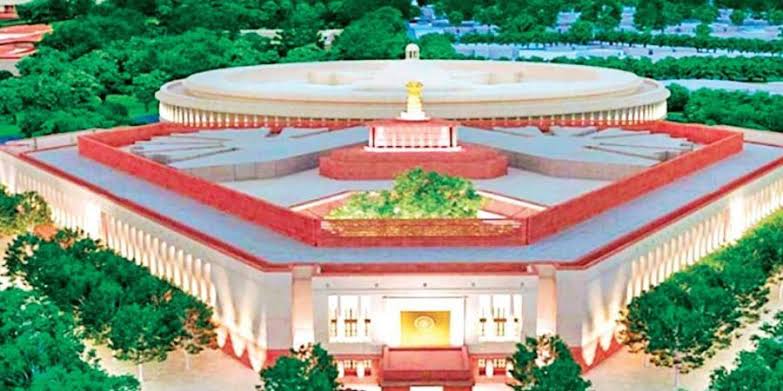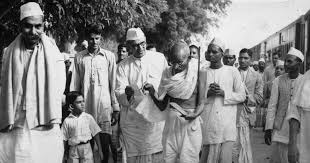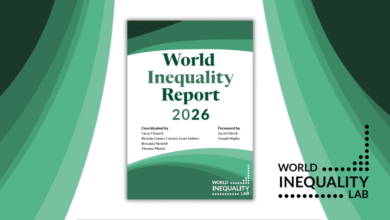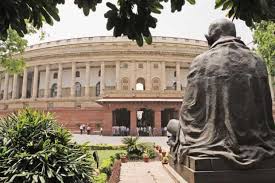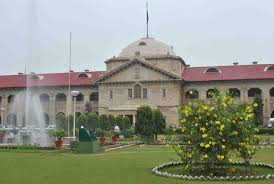Are some more equal than others!
In current times when India, like many other countries, is reeling under a severe economic crisis as well as backbreaking humanitarian crises, we also see ugly lavish (and avoidable) government expenditures, throwing austerity to the winds and jeopardising public interest.
While equality is among the key values of the Indian Constitution, there are several instances that remind us of George Orwell’s famous quote: “All are equal, but some are more equal than others”, even during the pandemic.
Despite an existing historic Parliament House building of India, sprawling opulent residences of the President, Prime Minister or other ministers, the government is building a new Parliament and a palatial house for our Prime Minister at a cost of Rs 20,000 crores as per media reports. But in the Supreme Court the same government backtracked from keeping its promise of paying a compensation of Rs 4 lakhs to every person who has died of Covid-19, stating economic cost implications (as almost 4 lakh people have died of Covid in the country so total cost could be Rs 16,000 crores as of now). What is more humane and much needed- using Rs 16,000 crores for the welfare of the people, or frittering away Rs 20,000 crores on unnecessary pomp and show? In 2017 the Supreme Court has ordered a financial compensation of Rs. 5 lakhs to each victim of Endosulfan pesticide. Should a government ‘for the people, of the people and by the people’ build a new palace for its leaders and a new parliament, or help those who have lost their loved ones to the pandemic?
The Presidents of India, as per news report, from Dr. Rajendra Prasad to the current President, have at times travelled by a railway train (many used a Presidential Saloon). In 2019, upon orders of the current President himself, it was put out of use, and the Railway Department was instructed not to construct any more saloons to avoid “increased burden on the general public”, which was indeed a commendable step. But the same President has now used a full-fledged “Presidential Train” to travel from Delhi to Lucknow via Kanpur and then flew back from Lucknow. Meeting people was one of the said objectives of travelling by train, which is an important activity for a public representative, but are our public representatives truly accessible? Can common citizens go and meet our President, Chief Ministers, Governors, or other Ministers with ease? A woman who needed urgent medical help died in the traffic jam due to VVIP movement of the President’s cavalcade in Kanpur. Who is responsible for this death? Railway stations of Kanpur and Lucknow were converted into “fortresses” as per media reports – and needless to say how security and traffic diversions impact lives of common people when VVIP movements happen through our city. The President, who was conspicuous by his absence at the Ram Mandir foundation laying ceremony last year at Ayodhya, was especially brought to Lucknow to lay the foundation of a memorial in the name of Dr. Ambedkar with an eye on Assembly elections next year.
There seems to be no end to the insatiated spending spree of our leaders. Even as the pandemic devastated families across the country, two custom made Boeing B777 aircrafts- fitted with high security self-protection suites and full-fledged office space with conference cabins- and costing Rs 8400 crores were inducted in October 2020 to be used by the Prime Minister, the President and the Vice President. This expensive aircraft has been grounded most of the time because of the Covid intervention.
Although equality is enshrined as a constitutional right of every human being in our nation, yet we see inequality plaguing us historically. Concentration of power, wealth, and enjoyment of privileges, entitlements and rights by a tiny 1% elite is at the cost of the injustices and inequalities the remaining 99% of the population suffers.
Oxfam’s Inequality Virus’ Report shows that as the pandemic stalled the economy, forcing millions of poor Indians out of jobs, Indian billionaires increased their wealth by 35% during this period. In fact, India’s top 100 billionaires saw their fortunes increase by Rs 12.97 trillion. In stark contrast, 170,000 people lost their jobs every hour in the month of April 2020. Another study estimates that around 230 million Indians have been pushed into poverty in the last one year.
The imbalance in wealth distribution in India has worsened since 2014 when the BJP-led government came to power. It has benefitted the corporate sector and big property owners while the poor have become poorer. The Global Wealth Report 2018 shows that 52% of the total wealth of the country is now controlled by the top 1% of the population. India has ranked 129 among 158 countries in the 2020 Commitment to Reducing Inequality (CRI) Index. As per the index, India is among the world’s worst-performing countries in tackling inequality. India’s health budget is the world’s fourth-lowest and only half of the population has access to even the most basic healthcare services.
As per news report, speaking at a reception at a railway station while on his way to his native village, the President of India said that officers and teachers earn more than what he gets after-tax deduction. Is he trying to make us believe that the President is poorer than a teacher? For all that one knows, the President’s monthly salary could be more than the annual salary of a government school’s teacher! Just to remind ourselves, the President’s salary was increased by the current government in 2017 from Rs 1.5 lakhs to Rs 5 lakhs per month. In addition to the salary, the President receives other allowances, which include free housing and free medical treatment facilities (for life).
However, those who produce the food that sustains human life, are struggling to get even the legal guarantee of ‘minimum’ support price for their produce. The ongoing farmers’ movement since more than 7 months on the borders of national capital Delhi as well as in other states across the country is another testimony of deep-seated inequities in our governance.
Dr Ram Manohar Lohia, noted thinker and socialist leader, had given a practicable mantra, which incidentally is being followed by some private corporations in United States within their organisations, to not have more than 1:10 ratio between the lowest and highest salary in our society. Should not the minimum monthly salary in India be Rs 50,000 for each one of us, if our President draws the maximum of Rs 5 lakhs? Also, more importantly, is it not the time to question whose work is more important to sustain human life and who should get the maximum salary? Should a farm worker who produces life nurturing food for rich and poor alike get the minimum remuneration, so low that he has tocommit suicide when he falls in debt trap? Or the elite service class, or public representatives? Whose work is more essential to meet basic needs for sustenance of human life with dignity. As we rebuild after the Covid-19 onslaught should not we build a fairer and equitable world for everyone?
By Shobha Shukla, Bobby Ramakant, Sandeep Pandey
Phones: 9415785055, 9839073355, 0522-2355978
E-mail-ids: shobha@citizen-news.org, bobbyramakant@yahoo.com, ashaashram@yahoo.com
Shobha Shukla is with Citizen News Service (CNS), Bobby Ramankantis with CNS and Socialist Party (India) and Sandeep Pandey is with Socialist Party (India).

